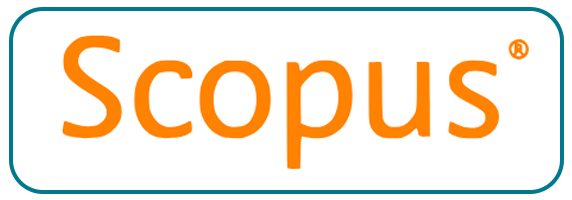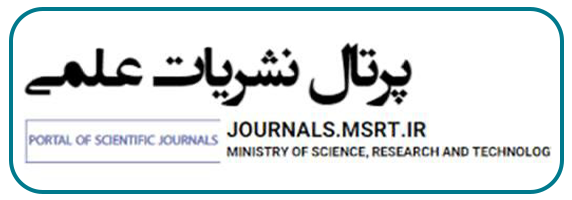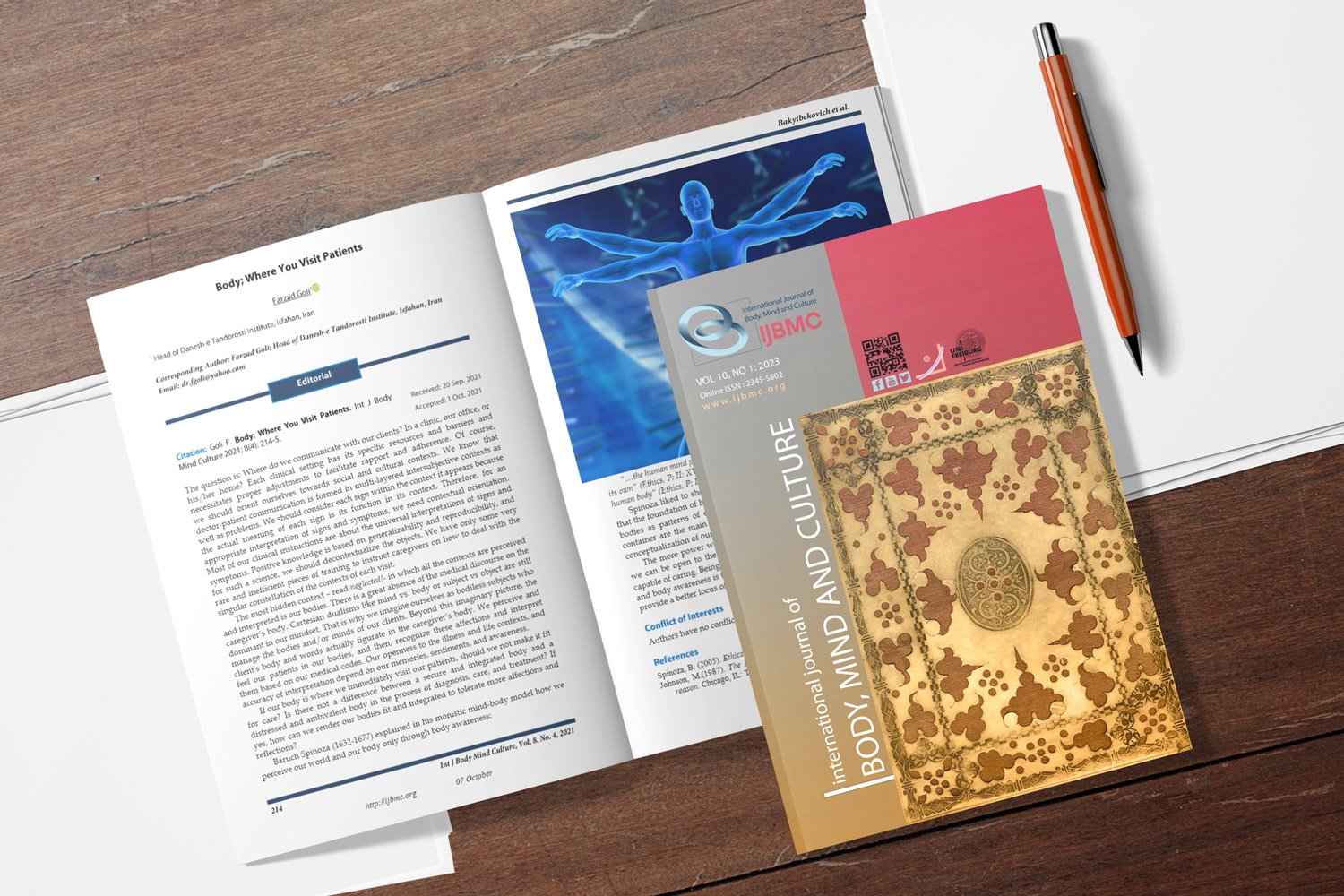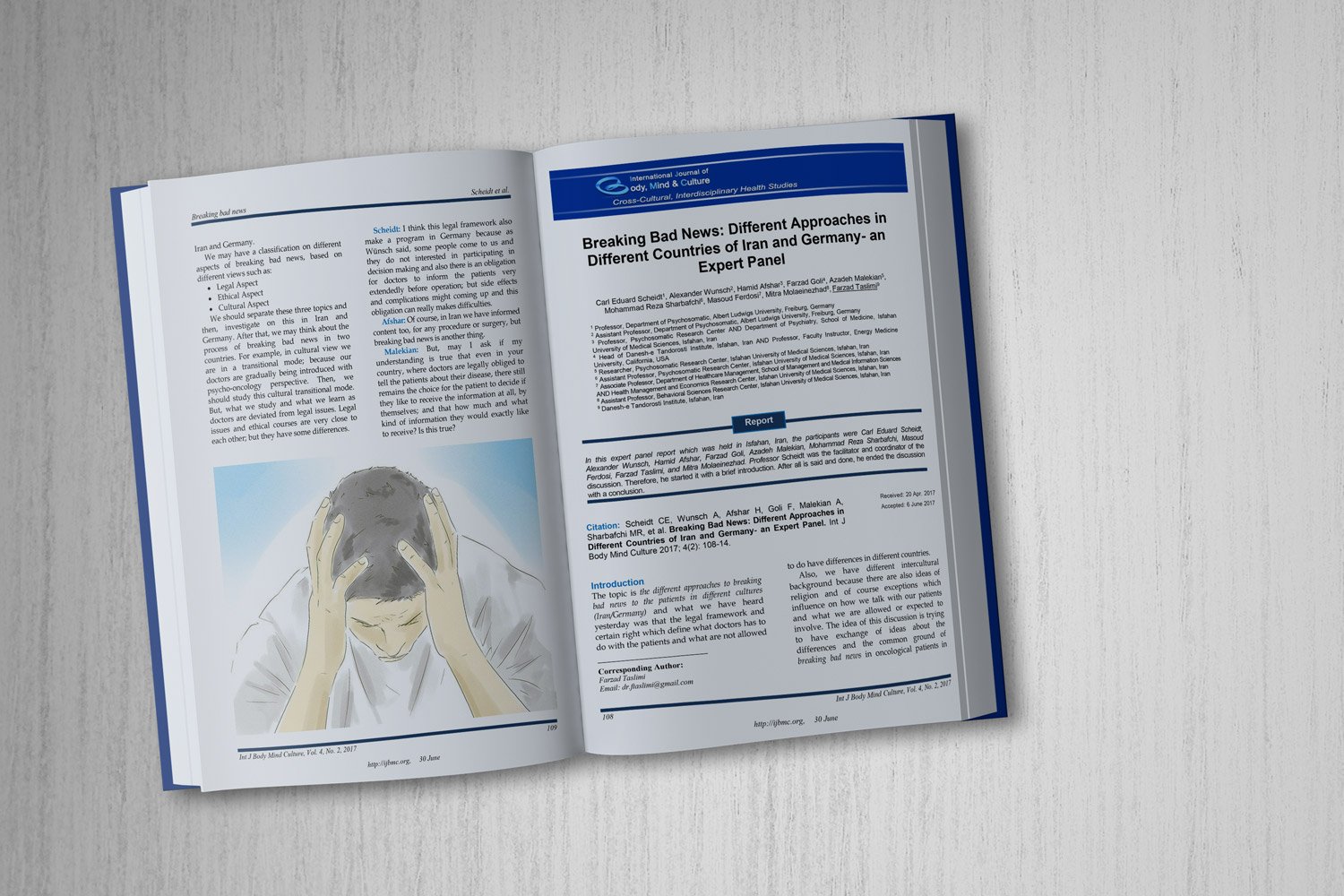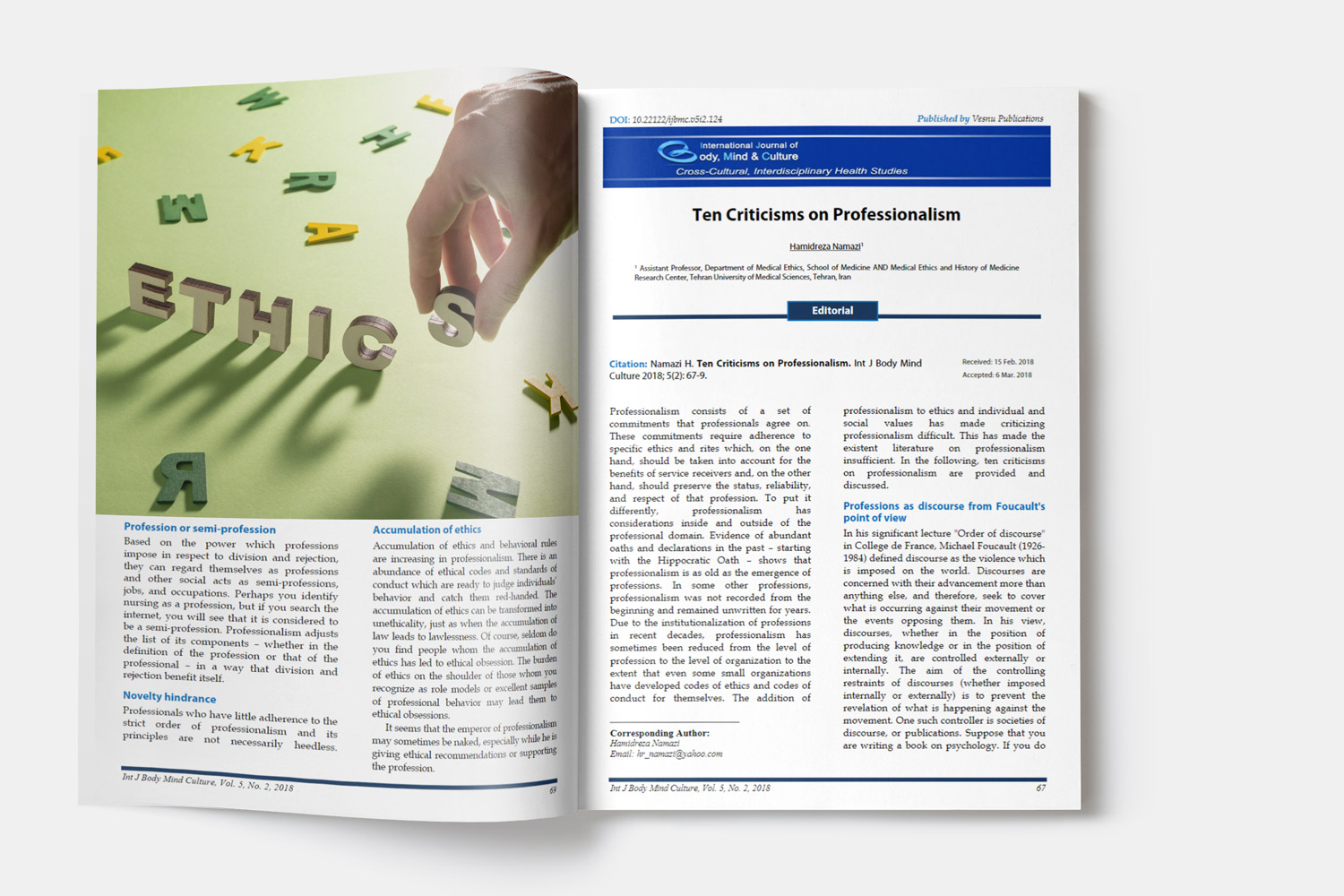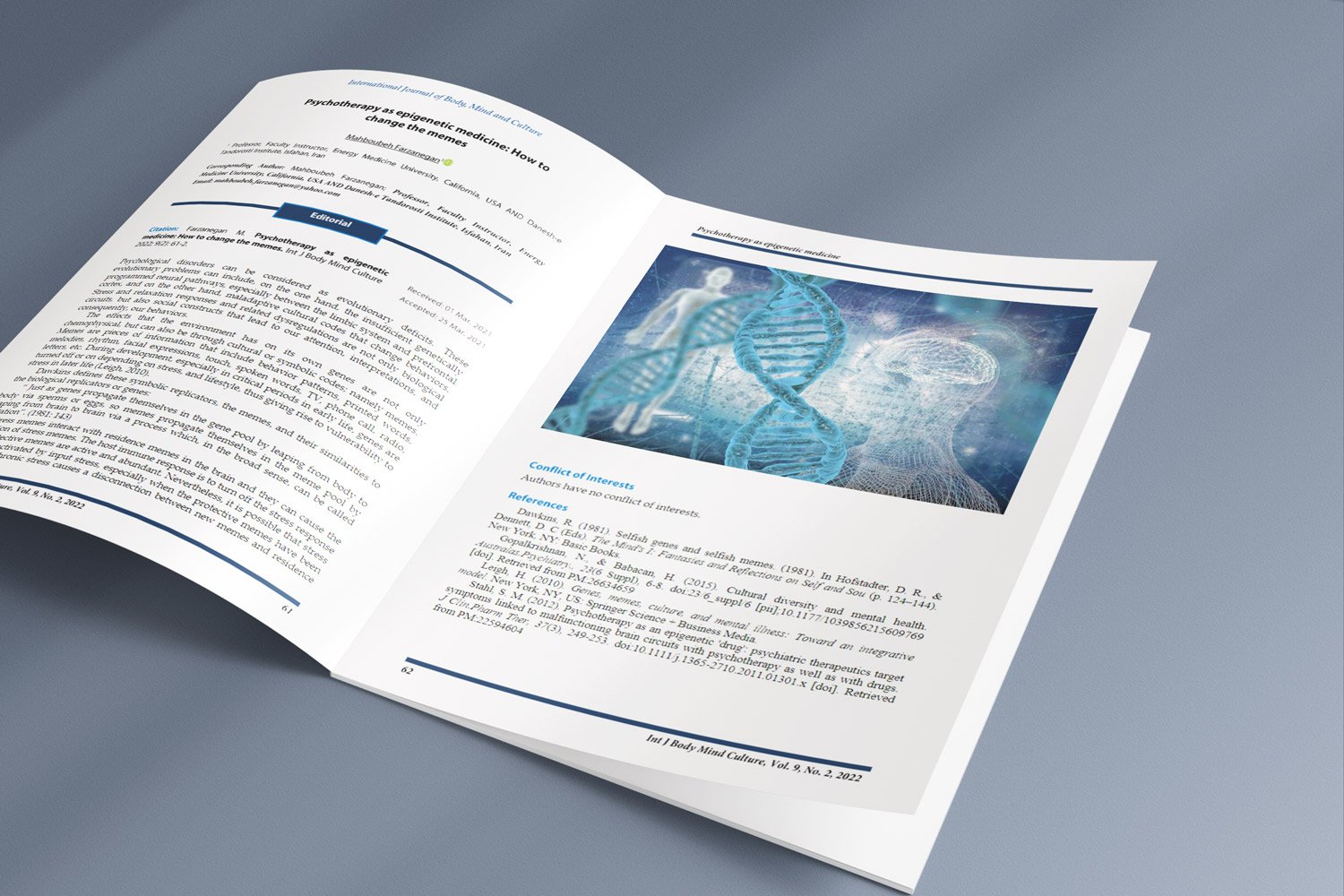Effectiveness of the Benson Relaxation Technique in Reducing Pain During Femoral Artery Sheath Removal Following Percutaneous Coronary Intervention: A Randomized Controlled Trial
Downloads
Objective: This study aimed to evaluate the effectiveness of the Benson Relaxation Technique (BRT) in reducing pain during femoral artery sheath removal after percutaneous coronary intervention (PCI).
Methods and Materials: A randomized controlled trial was conducted at three cardiac centers in Iraq. A total of 58 patients undergoing therapeutic PCI were randomly assigned into two groups: intervention (n=27) and control (n=31). The intervention group received BRT for 10 minutes before and after sheath removal. Pain was assessed using the Visual Analogue Scale (VAS) immediately after the procedure. Demographic data and clinical variables were collected. Data were analyzed using SPSS v26 and non-parametric tests (Mann-Whitney U, Kruskal-Wallis, and Spearman correlation).
Findings: The mean VAS score in the control group was 61.13±12.06 before sheath removal and 50.10±10.55 after. In contrast, the BRT group reported significantly lower pain scores: 36.48±11.80 and 28.81±8.20, respectively (p<0.001). No significant differences in pain scores were found with regard to BMI, smoking status, chronic disease, or previous PCI. Age showed a negative correlation with pain levels (p<0.05), and occupation had a significant influence.
Conclusion: Benson Relaxation Technique is an effective, non-pharmacological, and low-cost method for reducing pain during femoral sheath removal in PCI patients. Its implementation in nursing care can enhance patient comfort without adverse effects.
Downloads
Abbas, N. H., & Hassen, H. S. (2024). Effectiveness of Chest Pain Nursing Management on the Satisfaction of Patients with Angina in Emergency Unit. Iraqi National Journal of Nursing Specialties. https://doi.org/10.58897/taf74530
Ahmad, E. (2020). Cardiovascular Diseases (CVDs) Detection using Machine Learning Algorithms. Int J Res Appl Sci Eng Technol, 8(6), 2341-2346. https://doi.org/10.22214/ijraset.2020.6376
Al-Mussawi, G., & Al-Jubouri, M. B. (2024). Effect of Aromatherapy on Pain Intensity for Patients Undergoing Arterial Sheath Removal after Percutaneous Coronary Intervention: A Randomized Controlled Trial. Pakistan Journal of Life and Social Sciences, 22(1), 1427-1436. https://doi.org/10.57239/PJLSS-2024-22.1.0096
Al-zuhairy, M. R., & Al-Jubouri, M. B. (2024). Awareness of Patients Toward Warning Signs of Heart Attacks. Pakistan Journal of Life and Social Sciences, 22(1), 1437-1449. https://doi.org/10.57239/PJLSS-2024-22.1.0097
Alhassani, R. Y., Bagadood, R. M., Balubaid, R. N., Barno, H. I., Alahmadi, M. O., & Ayoub, N. A. (2021). Drug Therapies Affecting Renal Function: An Overview. Cureus. https://doi.org/10.7759/cureus.19924
Ali, M. I. M., Albashir, A. A. D., Elawad, O., & Mohamed, M. A. E. (2020). A case of successful coronary angioplasty in an achondroplasia patient with total occlusion of an anomalous right coronary artery (case report). BMC Cardiovasc Disord, 20. https://doi.org/10.1186/s12872-020-01612-z
Amini, M., Zayeri, F., & Salehi, M. (2021). Trend analysis of cardiovascular disease mortality, incidence, and mortality-to-incidence ratio: results from global burden of disease study 2017. BMC public health, 21. https://doi.org/10.1186/s12889-021-10429-0
Bastian, L. A., Fish, L. J., Gierisch, J. M., Stechuchak, K. M., Grambow, S. C., & Keefe, F. J. (2015). Impact of Smoking Cessation on Subsequent Pain Intensity among Chronically Ill Veterans Enrolled in a Smoking Cessation Trial. J Pain Symptom Manage, 50(6), 822-829. https://doi.org/10.1016/j.jpainsymman.2015.06.012
Bayindir, S. K., Çürük, G. N., & Oguzhan, A. (2017). Effect of Ice Bag Application to Femoral Region on Pain in Patients Undergoing Percutaneous Coronary Intervention. Pain Res Manag. https://doi.org/10.1155/2017/6594782
Changal, K., Syed, M. A., Atari, E., Nazir, S., Saleem, S., & Gul, S. (2021). Transradial versus transfemoral access for cardiac catheterization: a nationwide pilot study of training preferences and expertise in The United States. BMC Cardiovasc Disord, 21. https://doi.org/10.1186/s12872-021-02068-5
Desreza, N., Riza, S., & Zarita, N. (2024). The Influence of Benson Relaxation Technique on Pain Reduction in Patients after Cesarean Section Surgery. International Journal on Advanced Technology, 3(2). https://doi.org/10.55047/ijateis.v3i2.867
Ebrahimloee, S., Masoumpoor, A., Nasiri, M., Babaie, M., Farahani, A. V., & Yousefiasl, S. (2022). The effect of Benson relaxation technique on the severity of symptoms and quality of life in children with irritable bowel syndrome (IBS): a quasi-experimental study. BMC Gastroenterol, 22(1). https://doi.org/10.1186/s12876-022-02631-0
Gaziano, T. A., Prabhakaran, D., & Gaziano, J. M. (2020). Global Burden of Cardiovascular Disease. http://apps.who.int/gho/data/view.main.POP2040?lang=en
Gheorghe, A., Griffiths, U., Murphy, A., Legido-Quigley, H., Lamptey, P., & Perel, P. (2018). The economic burden of cardiovascular disease and hypertension in low- and middle-income countries: A systematic review. BMC public health, 18. https://doi.org/10.1186/s12889-018-5806-x
Heidaranlu, E., Goyaghaj, S., Moradi, A., & Ebadi, A. (2021). Patients Undergoing Arterial Sheath Removal after Coronary Artery Angioplasty. J Teh Univ Heart Ctr, 16. http://jthc.tums.ac.ir
Ike, S., & Onyema, C. (2020). Cardiovascular diseases in Nigeria: What has happened in the past 20 years? Nigerian Journal of Cardiology, 17(1), 21. https://doi.org/10.4103/njc.njc_33_19
Jakobsen, L., Holm, N. R., Maeng, M., Thim, T., Kristensen, S. D., & Mogensen, L. H. (2022). Comparison of MynxGrip vascular closure device and manual compression for closure after femoral access angiography: a randomized controlled trial: the closure devices used in every day practice study, CLOSE-UP III trial. BMC Cardiovasc Disord, 22(1). https://doi.org/10.1186/s12872-022-02512-0
Kaparang, A., Manengkey, A., Damar, A., Watania, L., & Diannita, C. (2022). The Effect of Benson Relaxation On Pain in Post Major Surgery Patients. Malahayati Nursing Journal, 4, 2305-2323. https://doi.org/10.33024/mnj.v4i9.6950
Khan, J. S., Hah, J. M., & Mackey, S. C. (2019). Effects of smoking on patients with chronic pain: A propensity-weighted analysis on the Collaborative Health Outcomes Information Registry. Pain, 160(10), 2374-2379. https://doi.org/10.1097/j.pain.0000000000001631
Kurt, Y., & Kaşıkçı, M. (2019). The effect of the application of cold on hematoma, ecchymosis, and pain at the catheter site in patients undergoing percutaneous coronary intervention. Int J Nurs Sci, 6(4), 378-384. https://doi.org/10.1016/j.ijnss.2019.09.005
Molazem, Z., Alizadeh, M., & Rambod, M. (2021). The effect of benson's relaxation technique on pain intensity, belief, perception, and acceptance in adult hemophilia patients: A randomized controlled trial. Int J Community Based Nurs Midwifery, 9(3), 187-198. https://doi.org/10.30476/ijcbnm.2021.87937.1471
Mullins, S., Hosseini, F., Gibson, W., & Thake, M. (2022). Physiological changes from ageing regarding pain perception and its impact on pain management for older adults. Clinical Medicine, 22(4), 307-310. https://doi.org/10.7861/clinmed.22.4.phys
Naghavi, M., Ong, K. L., Aali, A., Ababneh, H. S., Abate, Y. H., & Abbafati, C. (2024). Global burden of 288 causes of death and life expectancy decomposition in 204 countries and territories and 811 subnational locations, 1990-2021: a systematic analysis for the Global Burden of Disease Study 2021. The lancet, 403(10440), 2100-2132. https://linkinghub.elsevier.com/retrieve/pii/S0140673624003672
Nair, M., Singal, G., Yaduvanshi, A., & Kataria, V. (2020). First in man: percutaneous coronary angioplasty using non-fluoroscopic electro-anatomic mapping. Int J Cardiovasc Imaging, 36(7), 1189-1190. https://doi.org/10.1007/s10554-020-01830-8
Ndejjo, R., Hassen, H. Y., Wanyenze, R. K., Musoke, D., Nuwaha, F., & Abrams, S. (2021). Community-Based Interventions for Cardiovascular Disease Prevention in Low-and Middle-Income Countries: A Systematic Review. Public Health Reviews, 42. https://doi.org/10.3389/phrs.2021.1604018
Niknam Sarabi, H., Farsi, Z., Butler, S., & Pishgooie, A. H. (2021). Comparison of the effectiveness of position change for patients with pain and vascular complications after transfemoral coronary angiography: a randomized clinical trial. BMC Cardiovasc Disord, 21(1). https://doi.org/10.1186/s12872-021-01922-w
Paganin, A. C., Beghetto, M. G., Feijó, M. K., Matte, R., Sauer, J. M., & Rabelo da Silva, E. R. (2018). Vascular complications in patients who underwent endovascular cardiac procedures: Multicenter cohort study. Rev Lat Am Enfermagem, 26. https://doi.org/10.1590/1518-8345.2672.3060
Pamuk, G. D., & Özkaraman, A. (2024). The Effect of Cold Sand Pack on Percutaneous Coronary Intervention-Induced Vascular Complications and Pain: A Randomized Controlled Trial. Florence Nightingale J Nurs, 32(1), 58-67. https://doi.org/10.5152/FNJN.2024.23074
Petre, B., Torbey, S., Griffith, J. W., De Oliveira, G., Herrmann, K., & Mansour, A. (2015). Smoking increases risk of pain chronification through shared corticostriatal circuitry. Hum Brain Mapp, 36(2), 683-694. https://doi.org/10.1002/hbm.22656
Raipure, A., & Patil, S. (2023). Comparative Efficacy of Mitchell's and Benson's Relaxation Techniques in Alleviating Pain and Improving Quality of Life Among Patients With Premenstrual Syndrome: A Randomized Controlled Trial. Cureus. https://doi.org/10.7759/cureus.43877
Sabri, K. M., & Hassan, S. H. (2023). Effectiveness of Education Program on Nurses' Knowledge about Nursing Care for Patient Undergoing Cardiopulmonary Bypass Surgery. Iraqi National Journal of Nursing Specialties, 36(1), 10-16. https://doi.org/10.58897/injns.v36i1.731
Salman, F. K., & Salman, M. W. (2024). Assessment of Warfarin Therapy Knowledge among Patients with Cardiovascular Disease. Iraqi National Journal of Nursing Specialties. https://doi.org/10.58897/3yrahp76
Shu, T., Tang, M., He, B., Liu, X., Han, Y., & Liu, C. (2024). Assessing Global, Regional, and National Time Trends and Associated Risk Factors of the Mortality in Ischemic Heart Disease Through Global Burden of Disease 2019 Study: Population-Based Study. JMIR Public Health Surveill, 10. https://doi.org/10.2196/46821
Small, C., & Laycock, H. (2020). Acute postoperative pain management. British Journal of Surgery, 107(2), e70-e80. https://doi.org/10.1002/bjs.11477
Soysal, G. E., & Çelebi, E. (2024). The effect of postoperative pain on comfort in patients undergoing abdominal surgery. Journal of Surgery and Medicine, 8(6), 99-103. https://doi.org/10.28982/josam.7774
Titi, H. S. S., Untar, R., & Daryani. (2021). Benson Relaxation Relieve a Pain in Coronary Syndrome Patients. Proceedings of the 1st Paris Van Java International Seminar on Health, Economics, Social Science and Humanities (PVJ-ISHESSH 2020),
Vaduganathan, M., Mensah, G. A., Turco, J. V., Fuster, V., & Roth, G. A. (2022). The Global Burden of Cardiovascular Diseases and Risk: A Compass for Future Health. Journal of the American College of Cardiology, 80, 2361-2371. https://doi.org/10.1016/j.jacc.2022.11.005
Valikhani, M., Mahdizadeh, S. M., Eshraghi, A., Mazlum, S. R., & Dehghani, J. (2020). The Effect of Simultaneous Sand-Ice Bag Application on Hemorrhage and Hematoma after Percutaneous Coronary Intervention: A Randomized Clinical Trial. J Caring Sci, 9(4), 188-194. https://doi.org/10.34172/jcs.2020.029
Wicaksono, G., & Djamil, M. (2020). Effectiveness of Cold Compress with Ice Gel on Pain Intensity among Patients with Post Percutaneous Coronary Intervention (PCI). International Journal of Nursing and Health Services (IJNHS) Program, Master of Applied Health, 3(6). http://ijnhs.net/index.php/ijnhs/article/view/366
World Health Organization. (2021a). Cardiovascular diseases (CVDs). https://www.ncbi.nlm.nih.gov/books/NBK11767/?report=reader
World Health Organization. (2021b). Long working hours increasing deaths from heart disease and stroke: WHO, ILO. https://www.who.int/news/item/17-05-2021-long-working-hours-increasing-deaths-from-heart-disease-and-stroke-who-ilo
Zeleke, S., Kassaw, A., & Eshetie, Y. (2021). Non-pharmacological pain management practice and barriers among nurses working in Debre Tabor Comprehensive Specialized Hospital, Ethiopia. PLoS One, 16(6). https://doi.org/10.1371/journal.pone.0253086
Zhi, Y., Zhang, Y., Zhang, Y., Zhang, M., & Kong, Y. (2024). Age-associated changes in multimodal pain perception. Age Ageing, 53(5). https://doi.org/10.1093/ageing/afae107
Copyright (c) 2025 International Journal of Body, Mind and Culture

This work is licensed under a Creative Commons Attribution-NonCommercial 4.0 International License.

